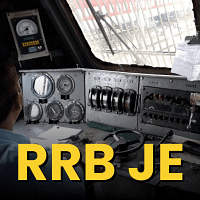Railways Exam > Railways Questions > The operation of removing humps and hollows ...
Start Learning for Free
The operation of removing humps and hollows of uniform concrete surface is known as
- a)Floating
- b)Screeding
- c)Trowelling
- d)Finishing
Correct answer is option 'B'. Can you explain this answer?
| FREE This question is part of | Download PDF Attempt this Test |
Verified Answer
The operation of removing humps and hollows of uniform concrete surfa...
There are 3 different steps involved for finishing concrete:
View all questions of this test
- Screeding: This is the process of striking off the excess concrete to bring the top surface to proper grade.
- Floating: Floating consists in removing the irregularities on the surface of concrete which are left after screeding.
- Trowelling: it is the final operation of finishing. It provides a smoother finish which is hard and abrasion resistant.
Most Upvoted Answer
The operation of removing humps and hollows of uniform concrete surfa...
Removing Humps and Hollows of a Uniform Concrete Surface
Introduction:
The operation of removing humps and hollows from a uniform concrete surface is an important step in the construction process. It ensures that the surface is smooth, even, and free from any irregularities. This operation is commonly performed in the construction industry and is essential for achieving a high-quality finished product.
Screeding:
The correct answer to the given question is option 'B', which is "Screeding." Screeding is a technique used to level and smooth the surface of freshly poured concrete. It involves the use of a screed, which is a long, straight board or a metal bar, to remove excess concrete and create a level surface.
Process:
The process of screeding involves the following steps:
1. Preparation: Before screeding, the concrete surface should be properly prepared. This includes removing any debris, cleaning the surface, and ensuring that it is properly moistened.
2. Placing the Screed: The screed is placed at one end of the concrete surface and is supported by two parallel guides or rails. The screed should be longer than the width of the area being screeded to ensure even distribution of the concrete.
3. Leveling the Surface: The screed is then pulled across the surface in a back-and-forth motion, with the leading edge slightly raised. This helps to remove excess concrete and fill any low spots, creating a smooth, even surface.
4. Checking for Levelness: During the screeding process, it is important to check for levelness using a level or a laser level. This ensures that the surface is uniform and free from humps and hollows.
5. Repeat if Necessary: If any areas are found to be uneven or have humps and hollows, the screeding process is repeated until a level surface is achieved.
Importance of Screeding:
Screeding is a crucial step in the concrete finishing process. It helps to:
- Create a smooth and even surface.
- Remove excess concrete and fill low spots.
- Ensure that the finished surface is level and free from humps and hollows.
- Provide a solid foundation for further finishing operations, such as trowelling or polishing.
Conclusion:
In conclusion, the operation of removing humps and hollows from a uniform concrete surface is known as screeding. It is an essential step in the construction process to achieve a high-quality finished product. Screeding involves the use of a screed to level and smooth the surface, ensuring that it is even and free from any irregularities.
Introduction:
The operation of removing humps and hollows from a uniform concrete surface is an important step in the construction process. It ensures that the surface is smooth, even, and free from any irregularities. This operation is commonly performed in the construction industry and is essential for achieving a high-quality finished product.
Screeding:
The correct answer to the given question is option 'B', which is "Screeding." Screeding is a technique used to level and smooth the surface of freshly poured concrete. It involves the use of a screed, which is a long, straight board or a metal bar, to remove excess concrete and create a level surface.
Process:
The process of screeding involves the following steps:
1. Preparation: Before screeding, the concrete surface should be properly prepared. This includes removing any debris, cleaning the surface, and ensuring that it is properly moistened.
2. Placing the Screed: The screed is placed at one end of the concrete surface and is supported by two parallel guides or rails. The screed should be longer than the width of the area being screeded to ensure even distribution of the concrete.
3. Leveling the Surface: The screed is then pulled across the surface in a back-and-forth motion, with the leading edge slightly raised. This helps to remove excess concrete and fill any low spots, creating a smooth, even surface.
4. Checking for Levelness: During the screeding process, it is important to check for levelness using a level or a laser level. This ensures that the surface is uniform and free from humps and hollows.
5. Repeat if Necessary: If any areas are found to be uneven or have humps and hollows, the screeding process is repeated until a level surface is achieved.
Importance of Screeding:
Screeding is a crucial step in the concrete finishing process. It helps to:
- Create a smooth and even surface.
- Remove excess concrete and fill low spots.
- Ensure that the finished surface is level and free from humps and hollows.
- Provide a solid foundation for further finishing operations, such as trowelling or polishing.
Conclusion:
In conclusion, the operation of removing humps and hollows from a uniform concrete surface is known as screeding. It is an essential step in the construction process to achieve a high-quality finished product. Screeding involves the use of a screed to level and smooth the surface, ensuring that it is even and free from any irregularities.
Attention Railways Students!
To make sure you are not studying endlessly, EduRev has designed Railways study material, with Structured Courses, Videos, & Test Series. Plus get personalized analysis, doubt solving and improvement plans to achieve a great score in Railways.

|
Explore Courses for Railways exam
|

|
Similar Railways Doubts
The operation of removing humps and hollows of uniform concrete surface is known asa)Floatingb)Screedingc)Trowellingd)FinishingCorrect answer is option 'B'. Can you explain this answer?
Question Description
The operation of removing humps and hollows of uniform concrete surface is known asa)Floatingb)Screedingc)Trowellingd)FinishingCorrect answer is option 'B'. Can you explain this answer? for Railways 2024 is part of Railways preparation. The Question and answers have been prepared according to the Railways exam syllabus. Information about The operation of removing humps and hollows of uniform concrete surface is known asa)Floatingb)Screedingc)Trowellingd)FinishingCorrect answer is option 'B'. Can you explain this answer? covers all topics & solutions for Railways 2024 Exam. Find important definitions, questions, meanings, examples, exercises and tests below for The operation of removing humps and hollows of uniform concrete surface is known asa)Floatingb)Screedingc)Trowellingd)FinishingCorrect answer is option 'B'. Can you explain this answer?.
The operation of removing humps and hollows of uniform concrete surface is known asa)Floatingb)Screedingc)Trowellingd)FinishingCorrect answer is option 'B'. Can you explain this answer? for Railways 2024 is part of Railways preparation. The Question and answers have been prepared according to the Railways exam syllabus. Information about The operation of removing humps and hollows of uniform concrete surface is known asa)Floatingb)Screedingc)Trowellingd)FinishingCorrect answer is option 'B'. Can you explain this answer? covers all topics & solutions for Railways 2024 Exam. Find important definitions, questions, meanings, examples, exercises and tests below for The operation of removing humps and hollows of uniform concrete surface is known asa)Floatingb)Screedingc)Trowellingd)FinishingCorrect answer is option 'B'. Can you explain this answer?.
Solutions for The operation of removing humps and hollows of uniform concrete surface is known asa)Floatingb)Screedingc)Trowellingd)FinishingCorrect answer is option 'B'. Can you explain this answer? in English & in Hindi are available as part of our courses for Railways.
Download more important topics, notes, lectures and mock test series for Railways Exam by signing up for free.
Here you can find the meaning of The operation of removing humps and hollows of uniform concrete surface is known asa)Floatingb)Screedingc)Trowellingd)FinishingCorrect answer is option 'B'. Can you explain this answer? defined & explained in the simplest way possible. Besides giving the explanation of
The operation of removing humps and hollows of uniform concrete surface is known asa)Floatingb)Screedingc)Trowellingd)FinishingCorrect answer is option 'B'. Can you explain this answer?, a detailed solution for The operation of removing humps and hollows of uniform concrete surface is known asa)Floatingb)Screedingc)Trowellingd)FinishingCorrect answer is option 'B'. Can you explain this answer? has been provided alongside types of The operation of removing humps and hollows of uniform concrete surface is known asa)Floatingb)Screedingc)Trowellingd)FinishingCorrect answer is option 'B'. Can you explain this answer? theory, EduRev gives you an
ample number of questions to practice The operation of removing humps and hollows of uniform concrete surface is known asa)Floatingb)Screedingc)Trowellingd)FinishingCorrect answer is option 'B'. Can you explain this answer? tests, examples and also practice Railways tests.

|
Explore Courses for Railways exam
|

|
Suggested Free Tests
Signup for Free!
Signup to see your scores go up within 7 days! Learn & Practice with 1000+ FREE Notes, Videos & Tests.
























